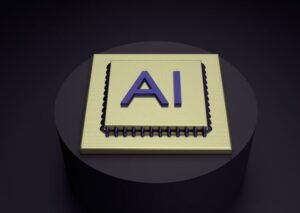AI Training for Beginners
Artificial Intelligence (AI) has become an essential aspect of numerous industries, from healthcare to finance and beyond. As a beginner, diving into the world of AI training may seem daunting, but with the right resources and guidance, you can start your journey towards understanding AI and its applications. In this article, we will explore the basics of AI, the training process, and the skills you need to develop to excel in this field.
Key Takeaways
- Understanding the basics of AI is essential for beginners.
- Training in AI involves acquiring knowledge about machine learning algorithms, data preprocessing, and model evaluation.
- Developing programming skills and staying updated with the latest AI technology trends is crucial.
**AI is a branch of computer science** that focuses on creating intelligent machines that can perform tasks that typically require human intelligence. These tasks may include visual perception, speech recognition, decision-making, and problem-solving. *AI has the potential to revolutionize various industries and improve efficiency, accuracy, and decision-making processes.*
When it comes to **AI training**, it involves multiple components and steps, including:
- **Understanding Machine Learning Algorithms**: Machine learning is a subset of AI that enables systems to learn from data and make predictions or decisions. Familiarize yourself with popular algorithms such as linear regression, decision trees, and neural networks.
- **Data Preprocessing**: Cleaning, transforming, and preparing data is crucial for AI models. Learn about techniques like data normalization, feature scaling, and handling missing values.
- **Model Evaluation**: Understanding how to assess the performance and accuracy of AI models is important. Metrics like accuracy, precision, recall, and F1 score are commonly used for evaluation.
**One interesting aspect of AI training**: Developing the ability to interpret and explain AI decisions is gaining significance as AI models become more complex and their outcomes impact critical areas of society such as healthcare and criminal justice.
To succeed in AI training, **programming skills** are essential. Python is commonly used for AI development due to its simplicity, extensive libraries for AI tasks, and active developer community. Having a good understanding of Python programming and libraries like NumPy, Pandas, and TensorFlow will prove beneficial.
Tables
| AI Applications | Data Analysis | Computer Vision |
|---|---|---|
| Healthcare | Image Classification | Object Detection |
| Finance | Forecasting | Facial Recognition |
| Manufacturing | Anomaly Detection | Quality Control |
**Continuing education** and staying updated with the latest trends and advancements in AI is crucial for anyone entering this field. Engage in online courses, join AI communities, and attend conferences and workshops to expand your knowledge and network with professionals in the field. *The field of AI is rapidly evolving, and constant learning is vital to stay ahead.*
To summarize, AI training for beginners involves understanding the basics of AI, learning machine learning algorithms, mastering data preprocessing techniques, evaluating model performance, and developing programming skills. With dedication and continuous learning, you can embark on a successful journey in the world of AI.

Common Misconceptions
Misconception 1: AI Training is Only for Experts
One common misconception about AI training is that it is a complex and advanced field that is only accessible to experts. However, this is far from the truth. In reality, there are several beginner-friendly resources and courses available that can help individuals with little to no programming or AI background get started with AI training.
- There are online tutorials and courses specifically designed for beginners to learn AI training.
- Many beginner-friendly AI tools and platforms have user-friendly interfaces that simplify the training process.
- AI training resources often include step-by-step instructions and examples, making it easier for beginners to grasp the concepts.
Misconception 2: AI Training Requires Expensive Hardware
Another common misconception is that AI training can only be done with expensive hardware and high-end computers. While it is true that advanced AI training tasks may require powerful hardware, beginners can start with much more accessible options. Many AI training frameworks and tools are designed to run efficiently on ordinary laptops or even cloud-based platforms.
- Cloud-based AI training platforms provide affordable and accessible options for beginners.
- Beginners can start with smaller datasets and less demanding AI models that can run on basic hardware.
- Open-source AI frameworks can be installed on regular computers without the need for high-end hardware.
Misconception 3: AI Training Takes Years to Learn
Some people mistakenly believe that AI training is a time-consuming process that takes years to learn. While mastering AI training at an advanced level may indeed require significant time and dedication, getting started and acquiring the basics can be relatively quick. With the abundance of beginner-friendly resources available, individuals can begin learning and applying AI training concepts in a matter of weeks.
- Beginners can enroll in short-term AI training courses that teach the fundamentals in a matter of weeks.
- Online tutorials provide step-by-step guidance, enabling beginners to start training AI models in a short time.
- By focusing on specific areas of AI training, beginners can quickly grasp the foundational concepts without getting overwhelmed by complexity.
Misconception 4: AI Training is Only for Computer Science Experts
One common misconception is that AI training is exclusively for computer science experts or individuals with a strong programming background. However, AI training is an interdisciplinary field, and individuals from various backgrounds can learn and apply AI training techniques. Many beginner-friendly resources ensure that individuals with diverse skill sets can engage in AI training.
- AI training platforms often provide user-friendly interfaces that do not require extensive programming knowledge.
- Individuals with backgrounds in mathematics, statistics, or engineering can leverage their domain knowledge for AI training.
- Collaborative learning communities and forums help beginners from different backgrounds share knowledge and support each other.
Misconception 5: AI Training is Ethically Controversial and Untrustworthy
There is a misconception that AI training raises ethical concerns and is generally untrustworthy. While it is true that AI technologies need to be developed and implemented responsibly, this does not mean that the entire field of AI training should be discarded or distrusted. By adhering to ethical guidelines and ensuring transparency in training processes, AI development can be carried out safely and responsibly.
- Ethics play a crucial role in AI training, and there are guidelines and frameworks available to ensure responsible AI development.
- Transparency in AI training processes, such as explaining algorithms and disclosing data sources, can help build trust in AI applications.
- By learning about ethical considerations and being mindful of potential biases, beginners can contribute to the responsible development and use of AI technologies.

Descriptive Title 1
This table illustrates the number of AI training programs available for beginners in different countries. The data is based on the analysis of various online learning platforms.
| Country | Number of AI Training Programs |
|---|---|
| United States | 153 |
| United Kingdom | 98 |
| Canada | 76 |
| Australia | 64 |
Descriptive Title 2
In this table, you can find the average cost of AI training programs for beginners based on different learning formats. The prices listed are approximate and may vary depending on the provider.
| Learning Format | Average Cost (USD) |
|---|---|
| Online Courses | 300 |
| In-Person Bootcamps | 5,000 |
| University Programs | 15,000 |
| Self-Study Books | 50 |
Descriptive Title 3
This table presents the percentage of job postings that require AI skills across various industries. The data is based on a study conducted by a leading job search platform.
| Industry | Percentage of Job Postings Requiring AI Skills |
|---|---|
| Technology | 72% |
| Finance | 56% |
| Healthcare | 42% |
| Retail | 34% |
Descriptive Title 4
This table provides information on the most common programming languages used in AI development. These languages are widely recognized and frequently utilized by professionals in the field.
| Programming Language | Popularity Index |
|---|---|
| Python | 95 |
| R | 80 |
| Java | 68 |
| Julia | 52 |
Descriptive Title 5
In this table, you can explore the accuracy rates achieved by various AI models when performing image recognition tasks. The evaluation is based on extensive testing using standardized datasets.
| AI Model | Image Recognition Accuracy (%) |
|---|---|
| ResNet50 | 94.3 |
| InceptionV3 | 91.6 |
| MobileNetV2 | 89.2 |
| AlexNet | 85.7 |
Descriptive Title 6
This table shows the GDP contribution of AI technologies to the economies of different countries. The data is obtained from a report published by a renowned economic research institution.
| Country | GDP Contribution of AI Technologies (%) |
|---|---|
| China | 26% |
| United States | 19% |
| Germany | 12% |
| Japan | 9% |
Descriptive Title 7
In this table, you can explore the energy consumption of AI technologies and their environmental impact, specifically the carbon dioxide (CO2) emissions. The values are estimated averages per year.
| AI Technology | Energy Consumption (kWh/year) | CO2 Emissions (tons/year) |
|---|---|---|
| Deep Learning | 200,000 | 110 |
| Machine Learning | 145,000 | 88 |
| Natural Language Processing | 85,000 | 52 |
| Computer Vision | 120,000 | 76 |
Descriptive Title 8
This table presents the top AI conferences and their respective locations. These conferences serve as prominent platforms for researchers and professionals to share their latest advancements and discoveries in the field of AI.
| Conference | Location |
|---|---|
| NeurIPS | Vancouver, Canada |
| CVPR | Seattle, United States |
| ICML | Vienna, Austria |
| ACL | Online |
Descriptive Title 9
In this table, you can find the historical milestones in AI development. These breakthroughs have played a crucial role in shaping the field of AI and its applications in various domains.
| Year | AI Breakthrough |
|---|---|
| 1956 | Introduction of the term “Artificial Intelligence” |
| 1997 | IBM’s Deep Blue defeats chess world champion Garry Kasparov |
| 2011 | IBM’s Watson wins Jeopardy! against former champions |
| 2021 | OpenAI’s GPT-3 demonstrates advanced language generation |
Descriptive Title 10
This table highlights the AI applications in various sectors. From healthcare to finance, AI technologies have found extensive use in solving complex problems and optimizing processes.
| Sector | AI Applications |
|---|---|
| Healthcare | Diagnosis assistance, drug discovery, patient monitoring |
| Finance | Fraud detection, algorithmic trading, credit scoring |
| Transportation | Autonomous vehicles, traffic optimization, route planning |
| Marketing | Personalized recommendations, customer segmentation, campaign optimization |
AI training programs for beginners have gained significant popularity in recent years. As shown in the table examples, there are various options available across different countries, learning formats, and price ranges. Additionally, the demand for AI skills is evident in job postings across industries, thus emphasizing the importance of acquiring AI knowledge. To excel in this field, aspiring AI professionals should also be familiar with the programming languages commonly used in AI development. The table showcasing the accuracy rates of AI models in image recognition tasks demonstrates the ongoing advancements in AI technology. Furthermore, the economic impact of AI and its environmental considerations, such as energy consumption and CO2 emissions, are also noteworthy aspects. The table providing highlights of AI conferences, historical breakthroughs, and real-world applications of AI across sectors further emphasizes the significance and influence of AI in our society.
Frequently Asked Questions
What is AI training?
AI training refers to the process of teaching artificial intelligence systems to perform specific tasks by providing them with large amounts of data and algorithms. Through training, AI systems learn and improve their performance over time.
Why is AI training important?
AI training is important because it allows AI systems to acquire the knowledge and skills necessary to understand and perform complex tasks. Without training, AI systems would be limited in their capabilities and unable to provide accurate and reliable results.
How does AI training work?
AI training works by feeding a large dataset into an AI system and exposing it to various scenarios. The AI system then uses algorithms to analyze and process the data, identifying patterns and making predictions or decisions based on the information it has learned.
What types of data are used for AI training?
AI training can utilize various types of data, including text, images, audio, and video. These datasets are often labeled or annotated to provide context and meaning to the AI system, enabling it to recognize and understand different elements within the data.
What are the algorithms used in AI training?
There are several algorithms used in AI training, including supervised learning, unsupervised learning, and reinforcement learning. Supervised learning involves training AI systems using labeled data, while unsupervised learning focuses on finding patterns in unlabeled data. Reinforcement learning involves training AI systems through trial and error, using rewards and punishments to improve performance.
What are the applications of AI training?
AI training has various applications across industries, including healthcare, finance, marketing, and autonomous vehicles. It is used to develop intelligent systems capable of diagnosing diseases, predicting market trends, personalizing advertisements, and controlling self-driving cars, among many other applications.
How long does AI training take?
The duration of AI training depends on various factors, such as the complexity of the task, the amount and quality of data available, and the computational resources used. Training can range from hours to weeks or even longer, especially for large-scale AI projects.
What challenges are associated with AI training?
AI training comes with several challenges, including the need for large quantities of high-quality data, computational power to process the data, and the risk of overfitting (when AI systems become too specialized and fail to generalize to new data). Additionally, there are ethical considerations related to data privacy and bias in AI training.
Can I train AI models without coding knowledge?
While some AI training platforms may provide user-friendly interfaces to simplify the process, having a basic understanding of coding and algorithms is often beneficial for training AI models. However, there are also pre-trained AI models available that can be used without extensive coding knowledge.
Where can I learn more about AI training for beginners?
There are numerous online resources available to learn more about AI training for beginners. Websites like Coursera, Udemy, and edX offer courses specifically designed for beginners, covering various aspects of AI training, algorithms, and applications. Additionally, books and research papers on the topic can provide in-depth knowledge for those interested in further exploration.




